Why this theme is important from an educational perspective
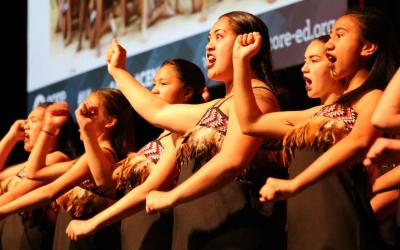
The culture of an educational organisation is the product of the beliefs and values, perceptions, relationships, attitudes, and written and unwritten rules that shape and influence every aspect of how it functions. The importance of an organisation’s culture cannot be underestimated in terms of the impact it has on its learners, teachers and staff, development of its local curriculum, and on the community it serves. Leadership at all levels has a powerful influence on culture. As a recent article from the World Economic Forum notes, organisational culture is a reflection of its leaders’ culture, ethics (or lack of them) and consciousness.
The culture of any learning setting directly influences the relationships in it. It affects how everyone interacts, leads, learns, develops and grows in that setting. This extends to their sense of belonging within their community. The culture of any organisation can enhance one's identity; embracing and celebrating racial, ethnic, linguistic, or cultural diversity, so that everyone feels valued and included.
Influences that change or alter any aspect of this mix will have an impact on the overall culture of an organisation. These influences affect the relationships, connectedness, the sense of belonging and ultimately the core business of learning centres - learning.
Whether we realise it or not, every setting will have established its own ‘culture’. In recent years this has become more explicitly addressed through the focus on developing a specific set of values as an important part of how the staff, children and young people and community give expression to what is most important to them. The challenge is to ensure that how all of these people connect, interact and work together on a daily basis is consistent with these espoused values.

The importance of the cultural dimension in education is most evident when considering the notions of identity, belonging and wellbeing. Together, these are foundational to a learner’s ability to engage meaningfully in learning. A culture based on inclusion and cultural responsiveness will result in a greater feeling of belonging among its members.
Simon Sinek makes the point that when the things you say and the things you do (actions) are aligned with what you actually believe (values), a thriving culture emerges.
A good example in Aotearoa is our commitment to Te Tiriti o Waitangi and the extent to which we understand and embrace this as part of our unique identity as a nation, and the cultural landscape we belong to at a national and local level. The journey to understand what Te Tiriti o Waitangi looks like, sounds like and feels like in all our learning settings is a critical part of addressing systemic issues of inequity, for all learners, particularly Māori.
When we collaboratively identify and articulate the characteristics of the culture we want to develop, then intentionally set about working and relating in ways that are consistent with that vision, our educational settings are more likely to be places where all learners experience a sense of identity and belonging, personal wellbeing and educational success.
Summary of the patterns and trends over the past 15 years
In looking back at the trends in this theme over the past 15 years we can break down the things that have happened into three key areas:
- A shift in the ownership of learning, resulting in a change in school culture from where the institution and teachers working within it are the authority, and students come to learn from what they have to offer. The increase in learner agency has given rise to a change in the role of teachers, including greater levels of collaborative activity and increased deprivatisation of the work of teachers. Ensuring the wellbeing of all is another key issue driven by this shift.
- Increasing diversity; challenging the paradigm of conformity and compliance, and taking into account the cultural narratives of schools and students, becoming culturally responsive and understanding the significance of being globally connected.
- Embracing a digital culture, including the impact on learner’s identity and privacy, implications around being a digital citizen, such as digital fluency, online safety and cyber-bullying. This also includes understanding the impact of digital technologies on all aspects of our lives, including artificial intelligence, and learning in the context of the maker culture.
While the things highlighted above have been identified as key trends over the past 15 years, it is important to understand that the range of influences that shape the culture of an education setting will include:
- Internal factors - leadership, staff expectations, traditions and rules.
- Community factors - cultural or belief systems represented, family/whānau educational experience and expectations of their children, location and wider environment of the learning setting.
- External factors - national educational policy and resourcing factors, political decisions and actions.
While there are many things educational leaders and community may do to establish an intentional culture in their setting, there are factors at play that will (a) contribute to the 'unseen' aspects of that culture, and (b) require a constant revisiting and reinforcing of the agreed values and behaviours that define that culture.
Examples of impact and consequences
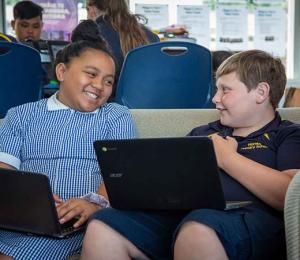
Significant policy shifts like Tomorrows Schools in 1989 have had an enduring influence on the culture of learning settings. At that time autonomy was given to individual schools to determine their own mission and values to reflect the uniqueness of the community they serve, and the particular aspirations they had for their young people.
Perhaps one of the key trends we’ve seen has been the way settings have recognised the increased diversity of learners. This has involved accommodating a range of belief systems, world views and multiple languages. And has meant changes to pedagogical practices that cater for diverse learners and groups of learners, including approaches to inclusive education, unpacking UDL, and the importance of the principles of Universal Design for Learning (UDL).
It’s not only the diversity inside our learning settings that shapes the cultural environment. Educators and learners alike are adjusting to living in an increasingly global and interconnected world that requires all learners to develop understandings of and respect for the language, culture and identity of others.
With more emphasis given to the learner at the centre of curriculum and pedagogical design, teachers are asking their students how they can become a better teacher. A key part of this journey at a national level has been the emphasis on delivering equity and excellence in student outcomes for all learners. To unpack and achieve this, many schools use tools such as the Equity-Centered Design Framework and the UDL Framework.
Aligned with this is the shift in ownership of learning, from teacher-centric environments to where learners are given greater responsibility, more voice and increased agency over their learning. CORE’s Shifting the Ownership of Learning Framework provides a useful breakdown to understand what is involved here, as does the CORE report on Strategies to develop student agency.
Recognising and accommodating the significance of an individual’s cultural background to their learning is also important, with learning centres focusing on building relationships with whānau, hapū and iwi. The development of cultural narratives can play a key role, providing powerful enablers for connecting our past to the present, situating us in the context of the places we co-inhabit, and recognising the influences of people, places, time and events in shaping who we are.
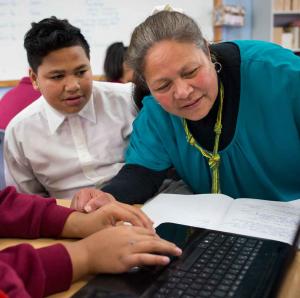
Another key driver of change in our culture as a society, and in our places of learning, is the role of digital technology. This has become pervasive in almost every facet of our lives, and has led to the identification of the skills required to function productively in a modern world.
At the personal level we have seen increasing emphasis given to the development of digital fluency by every learner. Drivers for this are increased personal responsibility, online identity, digital literacies and citizenship, cyber security, access and equity of opportunity.
Collectively this leads to a focus on digital citizenship, understanding what it means to live respectfully and responsibly in a world where digital technologies are changing the ways we connect, communicate and relate to one another. In this context, learners have to understand who they are in the digital world, what they need to do in order to protect the things we want to keep private, and how they need to do this for others, as well. Sadly, we’ve seen an increase in the incidence of things such as cyber-bullying and the subsequent impact on behaviours, particularly as this can be done so publicly online. As technology continues to affect every part of our lives, and as the impact of exponential change affects us all, the impact on our health and wellbeing is becoming increasingly significant. The impact these issues have on the culture of organisations cannot be underestimated.
For decades schools have been places where teachers have been able to operate with relative independence, but increasingly we’ve seen the emergence of practices in schools where teachers and students operate in more open environments, where the sharing of strengths and knowledge is valued and encouraged. This deprivatisation of practice includes the shift from regarding teachers as the sole authority within their own classroom, to seeing them work as a part of a team where their work with learners is always ‘in view’ of their colleagues.
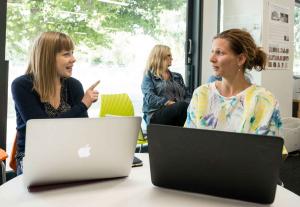
A more recent development that is likely to remain a key focus into the future is the impact that all of this has on our 'human-ness', with technology increasingly being used to not only supplement or augment our human capabilities, but in some cases replace them. Nothing illustrates this better than the emergence of Artificial Intelligence, understanding the significant ways in which our human interactions and decision making are being impacted by ‘machine thinking’. This stretches to the area of intuition and decision making, and the use of neural networks capable of outperforming humans. Whether being used to support the personalised learning of mathematics as with Amy: The AI behind smart online learning, or as a focus of learning itself as with Finland challenging the entire world to understand AI by offering a completely free course, AI is here to stay and will likely continue to make significant changes to the way we teach and learn. To this end, UNESCO recently published an article titled Artificial Intelligence in education: challenges and opportunities for sustainable development.
What might we see moving forward into the future?
The culture of an education setting is unquestioningly the thing that defines the experience of all those who participate in it - educators, learners, family/whānau and community.
Similarly, that same culture will be in a process of constant change and evolution as a result of the changes in population that will inevitably occur over the years.
Looking ahead, it is most likely that we will continue to see significant influences on organisational culture arising from the same three things identified in section two above, those being:
- Shift in ownership. The genie is out of the bottle in terms of the shifts toward greater levels of learner choice, voice and agency in our education system. There are three important things to understand here. First, this is not simply an ideological shift, but one that is borne out of the recognition that there are no longer any limits to what might interest learners, and what they might need to know or do as they prepare for life beyond school. So it becomes increasingly difficult to justify or sustain an approach to schooling that pre-determines how and what a student learns. It is the essence of personalisation, recognising the ability of every individual to achieve success. Second, this shift is not about abdicating the roles and responsibilities of educators, and allowing learners to ‘take control’ without them. It is about redefining roles and responsibilities, and understanding that we must operate with a knowledge building curriculum, rather than one that is premised on the transfer of knowledge. Thirdly, the key cultural aspect of this shift must be seen in an increased level of collaboration and working together. The strength of the culture of any place of learning, and of the system in general, will be in the level of interdependence exhibited, and the benefits of collective efficacy experienced as a result.
- Diversity. As our learner populations become more diverse (culturally, ethnically, by religious belief, and gender identity), learning settings themselves will need to create cultures that focus on inclusion, tolerance and cultural responsiveness. Regarding these things as positive disruptors will help interrupt the status quo, and result in us achieving greater levels of equity in our system. Taking steps towards developing understandings about difference and how it must be accommodated in our traditionally 'one-size-fits-all' structures and systems will be important for educators, early childhood centres, schools and kura, and our system as a whole.
- Digital. As the use of digital technologies continues to impact almost every aspect of our lives, education settings will not escape, and the impact of this on their organisational culture will continue to be an issue. It is the unintended consequences of technological adoption that we need to be focused on in terms of impact on culture. The issue of digital distraction has already been identified as a problem by many commentators, with some educational settings choosing to scale back their use of technology, and in some cases create environments that are technology free. However an individual learning centre chooses to address these issues, the fact remains that our young people will be growing up in this digitally saturated world. As responsible citizens, educators and learners will need to demonstrate a level of digital fluency required to participate fully, along with a good understanding of the need to be 'cyber-safe' and the significance of their digital identity and the digital footprint they are leaving behind as a result of their online behaviours.
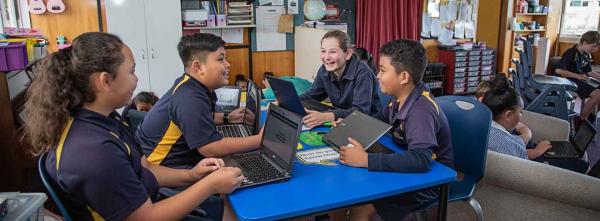
-
Consider
Some questions that may help guide your thinking and discussions within your education context as you consider the type of culture you wish to build and sustain are:
- To what extent do your organisation’s values, and the practices that stem from them, resonate with the issues identified in this trend?
- Can you articulate the attributes that define your organisation’s culture? What do these look like on a daily basis in your setting? Would everyone in your community identify the same things?
- How are you considering Universal Design for Learning?
- Have you considered ways to authenticate your commitment to Te Tiriti o Waitangi in your organisation and its culture? Do new families and whānau feel safe and that their identity is embraced? How do you celebrate cultural and ethnic diversity? Do all staff and students behave in culturally responsive ways?
- To what extent is the voice of learners and of your community effective in helping determine the culture of your setting? How is this happening? In what areas could it be improved?
- How is being digital considered as a part of the culture in your setting? To what extent are digital technologies being used to promote a healthy organisational culture (e.g. communications with parents/whānau, reporting, celebrating success, etc.)? How are you addressing the non-desirable effects (e.g. cyber-safety, identity and access management)?
- What are you doing to maintain a healthy environment where all can thrive, staff and students? Do you have an effective wellbeing strategy in place? How do you assess its effectiveness?
-
Resources
For those wanting to dig deeper into some of the key drivers in this area, some references worth checking out include:
- School Culture by Dr Louise Stoll - from the NZ Education Leaders website
- Why UDL (Universal Design for Learning) is valuable
- Universal Design for Learning
- What makes a good school culture? - Harvard Graduate School of Education
- Hauora | Wellbeing programme - CORE Education
- Infographic about honouring Te Tiriti o Waitangi - CORE Education
- Using cultural narratives in partnership with iwi - Haeata Community Campus
- Engaging with Māori - Kia Eke Panuku
- Every student matters: cultivating belonging in the classroom - Edutopia
- Creating a belonging place - NZCER
- Supporting LGBTQA+ students
- Educationally Powerful Connections video kete - Learning partnerships
-
Examples in practice
- Culturally Responsive Leadership
- School stories - Culturally Responsive Leadership
- Learning e-Learning
- School stories - Leading e-Learning
- Place-based Education
- Digital Citizenship
- Learner Agency
- Snapshots of Learning
- Designing for Engagement
- Student experiences of UDL
- Universal Design and inclusive classrooms
- Reading Together® Implementation Exemplars
- Holy Family School, 2019 Winner, Excellence in Engaging